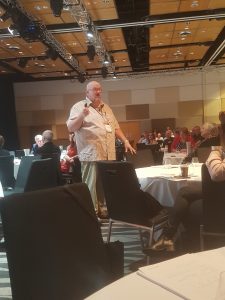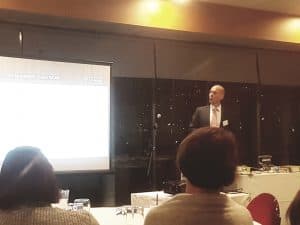 Earlier this month SafetyAtWorkBlog published an article based on an anecdote by Todd Conklin about a glove. There was much more that Conklin shared at the SafeGuard conference in New Zealand. Below are several of his slides/aphorisms/questions that may challenge the way you think about managing occupational health and safety (OHS) in your workplace.
Earlier this month SafetyAtWorkBlog published an article based on an anecdote by Todd Conklin about a glove. There was much more that Conklin shared at the SafeGuard conference in New Zealand. Below are several of his slides/aphorisms/questions that may challenge the way you think about managing occupational health and safety (OHS) in your workplace.
Category: Premium
Insurer-led rehabilitation case management does not work
 On the eve of a Return-to-Work symposium in Hobart, Alex Collie, challenged the a seminar audience, as all good speakers should. His analysis of research data has found the following confronting information:
On the eve of a Return-to-Work symposium in Hobart, Alex Collie, challenged the a seminar audience, as all good speakers should. His analysis of research data has found the following confronting information:
- “main service delivery mechanism (case management) is ineffective at best, harmful at worst,
Safety Culture and/or safetyculture

SafetyAtWorkBlog and others have been critical of some of the products and practices of Australia safety company SafetyCulture. However Luke Anear, SafetyCulture’s CEO invited me to speak at a briefing for his staff and this seemed a good opportunity to better understand his company.
Do open plan offices and sit/stand desks create as many problems as they solve?
 The mainstream media regularly includes articles and, increasingly, advertorials, about the modern workplace, usually office buildings, that are designed to foster creativity, communication, productivity and improve physical health. In many of these workplaces, it quickly becomes apparent that there are never enough meeting rooms for confidential discussions, making the coffee shop in the foyer or a nearby building, essential venues for conversations that would, in the past, be conducted in an office.
The mainstream media regularly includes articles and, increasingly, advertorials, about the modern workplace, usually office buildings, that are designed to foster creativity, communication, productivity and improve physical health. In many of these workplaces, it quickly becomes apparent that there are never enough meeting rooms for confidential discussions, making the coffee shop in the foyer or a nearby building, essential venues for conversations that would, in the past, be conducted in an office.
It also does not take long for a lot of the workers to be at their desks wearing earbuds or headphones in order to negate the noise that the modern workplace allows and creates. This need for isolation and concentration is contrary to the intentions of the office designers. It is not simply a reflection of the modern ipod technology but a human desire for privacy, focus, diligence and productivity. New research seems to indicate that the situation is not helped by sit/stand desks.
Todd Conklin’s glove
At the 2017 SafeGuard conference in Auckland,
New approach to mental health of young men needs to expand to include work
The next step in incident investigations – Learning Teams
 The SafeGuard conference in Auckland this week has provided some excellent occupational health and safety (OHS) insights but the standout, on Day 1, was the end of the day panel. Often these are dull and given to less than half the audience who have either had children to collect or choose to go to the casino next door.
The SafeGuard conference in Auckland this week has provided some excellent occupational health and safety (OHS) insights but the standout, on Day 1, was the end of the day panel. Often these are dull and given to less than half the audience who have either had children to collect or choose to go to the casino next door.
This panel comprised two representatives of Contact Energy,
